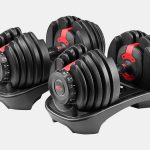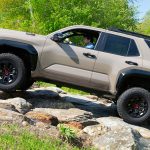
That’s where bike racks and carriers come in. They can provide a smart, safe, and easy way to transport your bike(s) to those beautiful country roads, serene bike paths, or secluded forest trails you’re dying to visit. The problem is that choosing the right bike rack isn’t simple. There are now a plethora of types, makes, and models of racks and carriers on the market, whether it’s an old-school, inexpensive strap-on trunk-mounted carrier, a roof-mounted rack, an expensive hitch-mounted platform rack, or a tailgate pad specific to pickup trucks.
We can help you choose the right rack for your needs and budget. Several members of the Cars team at CR’s Auto Test Center are cycling enthusiasts just itching for any excuse to load up their bikes and head to a new riding location. We recently purchased an assortment of bike racks and carriers for evaluation purposes. In doing so, we not only assessed the pros and cons of each type of rack but also learned some valuable bike-rack loading tips to share with you.
Making a good bike-rack choice will depend partly on how often you plan to use the rack and how many bikes you need to transport, as well as what type of vehicle you drive, the type of bicycles you’re looking to carry, and, of course, how much money you’re willing to spend.
Hitch racks, in particular, are becoming the go-to rack of choice for many cyclists. “We are noticing a significant shift in the way consumers are transporting their bikes in the past five years,” says Chris Ritchie, director of marketing at Thule, one of the most popular bike rack companies. He says the shift to hitch racks is at least in part due to the growth of the SUV market, as an SUV’s taller height makes it harder to load a bike onto its roof than with a lower-slung car.
Now, you may think, “But my car isn’t rated for towing, how would I get a hitch?” Don’t fret, says John Ibbotson, CR’s chief mechanic. “Any car, even smaller ones, can have a hitch installed on it,” he says. The most important thing is to make sure that whatever size hitch receiver you have installed on your vehicle (typically 1.25 or 2 inches) matches that of the rack you’re planning to purchase. Many hitch racks are available in either size, but even if the rack you’re looking to purchase isn’t available in a matching size, it can often be ordered with an adapter, or you can purchase a hitch adapter at most auto parts stores.
Although the hitch-mounted, tray-style (also known as platform) bike racks are currently the most popular racks that REI sells right now, the outdoor gear store tells CR that it’s still seeing customer demand across all bike rack styles. “Interest really depends on where you live, how much storage space you have, how big your car is, and what kind of riding you’re doing,” says Nathan Grothe, a bike accessories merchandising manager for REI.
And the increased popularity of electric bikes, known as “e-bikes,” has brought even more new racks. “There are now bike racks made especially for e-bikes, including Thule’s EasyFold and the Yakima OnRamp, that are designed to specifically cater to these heavier models,” Grothe says.
Below, CR members can see our advice and bike rack recommendations.









